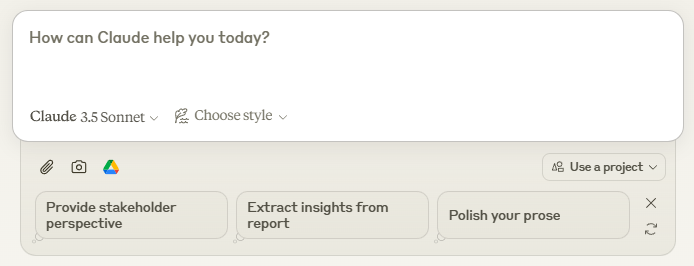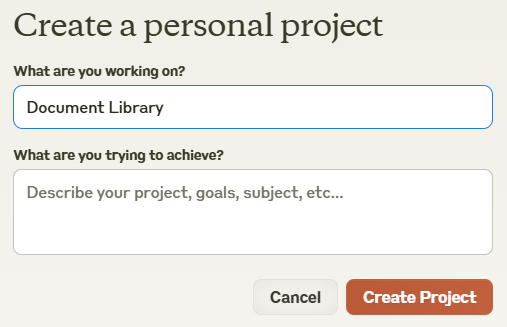One of the most powerful ways to improve your nonprofit's grant writing process is to create an intelligent library of your past applications and best practices. In this guide, we'll walk through how to build your own using modern AI tools, making it easy to find and reuse your best content.
Why Build an Intelligent Grant Library?
Traditional document storage systems like SharePoint or Google Drive are good for organizing files, but they lack the intelligence to understand the content within those files. An AI-powered library can:
- Understand the context and meaning of your grant narratives
- Find relevant content even when the wording is different
- Help maintain consistency across funding applications
- Save time by quickly surfacing your best past responses to common grant questions
Setting Up Your Library
Step 1: Gather Your Content
Start by collecting your valuable grant content, such as:
- Past successful grant applications
- Organization capability statements
- Program case studies and impact reports
- Needs assessments and community data
- Staff bios and credentials
- Budget templates and financial models
Step 2: Choose Your AI Platform
Several AI platforms can help you build your library. One of the most effective to use is Claude.ai's Projects feature, which lets you upload documents and query them naturally. What sets Claude apart is its exceptional ability to understand context and nuance in complex documents, making it particularly well-suited for grant applications. It can grasp mission-specific terminology and maintain context across multiple related queries.

You've likely heard of Chat GPT. Claude is another tool much like Chat GPT built by a company called Anthropic. There are a few things Claude excels at. One is that you can create "projects" which can store multiple documents which you can then query via the standard chat interface.
How to Create a Claude Project
- Sign up for a Claude account at https://claude.ai
- You will need to purchase a paid plan to use the projects feature
- Create a new project by clicking on the "Use a project" button then selecting the "Create a new project" option
- Give it a name and description
- You are ready to upload your documents under "Project Knowledge" on the right



Step 3: Organize Your Content
Before uploading, organize your content into logical categories:
- Program Descriptions
- Organizational History
- Impact Measurement
- Community Needs
- Budgets and Financial Information
Now quickly check you've not got any duplicates or out of date content. There is a limit on how much you can upload in a single project. You should avoid uploading irrelevant content or anything which is out of date and will lead Claude to give you wrong answers.
Best Practices for Document Preparation
You can play pretty fast and loose with preparing your documents to be honest! You could even skip this step and see what the results are like. You can always remove documents, tidy them up and re-upload if necessary. However, if you have any sensitive beneficiary information in your docs I would recommend you remove those.
- Clean Your Documents
Remove the following types of sensitive information:
- Beneficiary names, addresses, and contact information
- Staff personal information and salaries
- Grant numbers and detailed financial information
- Use Clear Formatting
Structure your documents with clear, descriptive headings such as:
- "Program Description - Youth Mentorship"
- "Past Performance - Community Health Initiatives"
- "Evaluation Framework for Education Programs"
- "Sustainability Plan"
- Add Context
Include metadata at the start of each document using a consistent template:
Grant Type: [e.g., Foundation, Federal, State] Focus Area: [e.g., Education, Health, Environment] Grant Amount: [Range: $10K-$100K] Status: [Awarded/Declined] Date: [Submission Date] Key Strengths: [Brief bullet points]
Using Your Library Effectively
Sample Queries
Here are effective ways to query your library, along with what you can expect:
- "Find our best responses about program sustainability"
The library will surface relevant past responses that showcase your funding diversification strategies, community partnerships, and long-term planning approaches.
- "Show me past evaluation frameworks for youth programs"
You'll get examples of successful measurement methodologies, data collection tools, and outcome reporting specifically tailored for youth-focused initiatives.
- "What's our typical response to questions about organizational capacity?"
The system will provide your proven approaches to describing staff qualifications, board expertise, and operational capabilities from past winning applications.
- "Find case studies related to community engagement projects over $50K"
You'll receive relevant success stories filtered by project size, helping you match past performance to current funding opportunities.
Maintaining Your Library
Keep your library valuable with these maintenance practices:
- Update content quarterly with new successful grant applications
- Remove outdated program information
- Add new impact reports as programs progress
- Update staff qualifications and board member information
- Based on the project documents, what is the answer to this question: "..."
Advanced Tips
Once your basic library is set up, consider these advanced strategies:
- Create AI-Friendly Response Templates
Design templates with clear section markers, placeholder text in [brackets], and designated areas for program-specific details. Include comments that guide users on customization points and required information.
- Track Performance Systematically
Create a scoring system for your responses (1-5 stars) based on funding success rates and funder feedback. Tag successful applications with metadata like "Funded" or "High Impact" to help the AI prioritize successful content.
- Build Multiple Libraries
Consider separate libraries for different funding sources or program areas to maintain focus and relevance in your applications.
Common Pitfalls to Avoid
- Don't upload confidential or sensitive beneficiary information
- Avoid storing detailed financial data in the library
- Don't rely solely on AI-generated content without human review
- Keep content up-to-date to prevent using outdated information
Next Steps
Ready to build your intelligent grant writing library? Start small with a pilot project:
- Select your top 3-5 most successful past grant applications
- Clean and prepare the documents following the best practices above
- Set up a test project in your chosen AI platform
- Experiment with different queries and see what works best
- Gradually expand with more content as you refine your process
An intelligent grant writing library is a valuable asset that will continue to grow and improve over time. By leveraging AI to surface your best content, you'll be able to create higher-quality grant applications faster and more efficiently. The initial investment in setting up and organizing your library will pay dividends through increased funding success rates, reduced application times, and more consistent, compelling narratives. Start building your library today and transform your approach to nonprofit grant writing.
